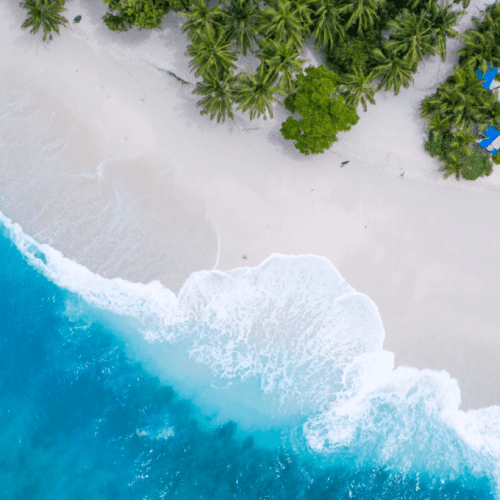Planning a Trip to India: The Ultimate Travel Guide for First-Time Visitors
Table of Contents
Planning a Trip to India: The Ultimate Travel Guide for First-Time Visitors
Planning a trip to India for the first time? You’re not alone. Most travelers are overwhelmed at the idea of navigating such a vast and culturally complex country. This comprehensive guide solves that challenge by walking you through everything—from your first search to your last airport transfer. Whether you’re coming for the temples, the food, the mountains, or the chaos, India will change how you see the world.
In this detailed travel guide, you’ll find essential tips, regional breakdowns, health and visa info, and a sample India itinerary tailored for first-time travelers. If you’re unsure how to get started or how to build the perfect tour to india, this guide will give you the confidence and clarity to begin your journey. Let’s simplify the process of planning a trip to India, so that you can focus on what matters most: the experience.
Why India Should Be on Your Travel Bucket List
If you’re still wondering whether planning a trip to India is worth it, the answer is yes—without hesitation. India isn’t just a destination; it’s an emotional, sensory, and spiritual journey that challenges and transforms every traveler.
Here’s why India belongs at the top of your list:
- Cultural diversity: Every 100 kilometers feels like a different country, with unique languages, customs, and cuisines.
- Historical depth: Thousands of years of civilizations—from the Mughal Empire to British colonialism—are visible in every city.
- Spiritual discovery: Whether you practice yoga or not, the spiritual energy in places like Varanasi, Rishikesh, or Bodh Gaya is undeniable.
- Budget flexibility: Whether you want luxury palaces or $5 hostels, planning a trip to India can suit any budget.
- Natural beauty: Mountains, deserts, rainforests, beaches, backwaters, and rice paddies—you’ll find every type of landscape.
Few countries offer this kind of variety in a single journey, and no other place will stretch your imagination and heart like India does.
Step-by-Step Trip Planner for India
When planning a trip to India, it’s essential to take a step-by-step approach. With such a large and layered country, it’s easy to get overwhelmed. Use this basic framework to plan your journey efficiently:
1. Choose Your Travel Style
- Backpackers: Low-cost accommodation, public trains and buses, local eats.
- Mid-range travelers: Comfortable hotels, guided day tours, taxis or Ubers.
- Luxury seekers: 5-star resorts, private chauffeurs, boutique experiences.
- Spiritual travelers: Ashram stays, meditation retreats, sacred site visits.
2. Pick a Region First
When planning a trip to India, don’t try to see everything. Choose one region and explore it deeply.
- North India: Great for first-time travelers—Delhi, Agra, Jaipur, Varanasi.
- South India: More relaxed—Kerala, Tamil Nadu, Hampi, Mysore.
- West India: Rajasthan for forts and deserts, Goa for beaches.
- Northeast India: Untouched beauty—Sikkim, Meghalaya, Assam.
3. Determine Your Travel Duration
- 1 Week: Focus on a single area like Kerala or the Golden Triangle.
- 2 Weeks: Combine culture and nature—such as Delhi, Agra, Jaipur, and Kerala.
- 3–4 Weeks: Dive deeper and include offbeat spots like Hampi, Rishikesh, or the Northeast.
4. Build a Flexible Itinerary
Keep a few buffer days for rest and spontaneous exploration. India doesn’t run on a strict schedule. Being open to change makes your trip smoother.
Visa Info and Entry Requirements
No matter how early you’re planning a trip to India, understanding the visa info is crucial. Luckily, the process is now digital and fairly simple for most nationalities.
Tourist Visa Options:
- e-Tourist Visa (eTV) is the best choice for most tourists.
- Available in 30-day, 1-year, or 5-year validity.
- Applications should be submitted at least 4–7 days in advance.
- Apply via the official website: https://indianvisaonline.gov.in
Documents Required:
- Passport with at least 6 months validity
- Passport-sized photograph
- Confirmed travel plans or address of accommodation
Health and Currency Tips:
- Vaccinations: Typhoid, Hepatitis A and B, and routine immunizations.
- Water: Drink only sealed bottled water.
- Currency: Indian Rupee (INR). Carry small denominations for daily use.
- Use ATMs in urban areas and inform your bank before traveling.
Understanding the visa info early on helps avoid stress later and ensures your trip planner stays on track.
Sample India Itinerary for First-Time Visitors
A well-planned India itinerary can make all the difference. Here’s a sample 2-week plan for those planning a trip to India for the first time:
Week 1: The Golden Triangle (North India)
- Day 1–2: Delhi – Visit India Gate, Qutub Minar, Lotus Temple, Chandni Chowk.
- Day 3–4: Agra – Explore the Taj Mahal, Agra Fort, Mehtab Bagh at sunset.
- Day 5–7: Jaipur – City Palace, Amber Fort, local bazaars, and traditional Rajasthani cuisine.
Week 2: Culture or Nature Option
- Option A: Varanasi – Witness the Ganga Aarti, walk along the ghats, explore temples.
- Option B: Kerala – Relax in a backwater houseboat, explore Munnar’s tea gardens, and enjoy Ayurvedic treatments.
This India itinerary gives you the right mix of architecture, history, spiritual experiences, and nature.
Top Travel Tips India Visitors Should Know
Here are some essential travel tips India visitors should take seriously when planning a trip to India:
- Pack for all climates: Even in one region, weather can vary by day.
- Respect religious customs: Remove shoes at temples, dress modestly.
- Use ride-hailing apps: Ola and Uber are safer and prevent overcharging.
- Eat safely: Stick to restaurants with high turnover and avoid raw food.
- Learn basic Hindi words: “Namaste”, “Pani” (water), “Kitna?” (how much?) can go a long way.
- Carry cash: Many small vendors don’t accept cards, especially in rural areas.
- Don’t over-schedule: Give yourself breathing space to enjoy the chaos.
These travel tips India experts suggest will help you enjoy your journey with fewer surprises and more joy.
Best Time to Visit India
One of the most important parts of planning a trip to India is picking the right season:
- October to March: Cool, dry, and the best overall for most regions.
- April to June: Hot summer months—good for the Himalayas and hill stations.
- July to September: Monsoon season—lush landscapes, great for Kerala and Northeast India but risky for floods and delays.
Plan based on the type of experience you want—festivals, sightseeing, trekking, or beach lounging.
Transport and Travel Essentials
Indian transport can be confusing, but with the right tips, it’s manageable.
- Trains: Best for long-distance travel. Book in advance via IRCTC.
- Domestic flights: Affordable and save time. Book early for deals.
- Rickshaws and taxis: Negotiate or use apps to avoid being overcharged.
- SIM cards: Get one at the airport or local store for internet and maps.
When planning a trip to India, having your transport arranged in advance can prevent unnecessary stress.
Safety, Hygiene, and Culture Shock Tips
India is generally safe for travelers, but the intensity can be jarring at first. Here’s how to manage the cultural shift:
- Female travelers: Dress modestly, avoid late nights alone, and trust your intuition.
- Food hygiene: Don’t eat anything uncooked unless you’re sure of its source.
- Scams: Be aware of overly helpful strangers at train stations or airports.
- Noise and crowds: Prepare mentally—India is a sensory overload, and that’s part of its magic.
Expect the unexpected and stay open to the journey. That’s the essence of planning a trip to India the right way.
Where to Get Help Planning a Trip to India
If the planning process feels overwhelming, you’re not alone. Let professionals like QXP India help.
They specialize in:
- Custom India itinerary building
- On-ground local support
- Booking high-quality accommodations and tours
- Supporting responsible and ethical tourism
- Creating a seamless experience from arrival to departure
- Seamless honeymoon tours
Using a trip planner like QXP India can take the guesswork out of logistics so you can focus on discovering India’s wonders.
Frequently Asked Questions
Start by choosing your region, define your duration, apply for a visa, and build a basic itinerary. Use trusted sources or companies like QXP India to help.
Travel light, stay hydrated, carry cash, respect local customs, and expect the unexpected. Booking ahead and dressing modestly are also key.
Loose, breathable clothes, power adapter, medications, copies of travel documents, sunscreen, and a scarf for temple visits.
Yes, with precautions. Stay in well-rated places, use ride-hailing apps, and inform someone about your plans.
Yes. Apply online via the Indian government e-Visa portal for a tourist visa before arriving.
This depends on your style. Backpackers can get by on $25–$40/day; mid-range on $60–$100; luxury travelers on $150+.
Absolutely. Trains are iconic, affordable, and widespread. Book early, especially for overnight routes.
October to March is ideal for most regions, while April–June suits hill stations, and July–September is best for Kerala and the Northeast.
cityandtalent
Related Articles
Best Cities to Visit in India | Best Places to Travel in India | Best Time to Visit India | Cool Places in India | Family Holidays India | India Tourist Attractions | India Travel Guide | India Travel Tips | Is India Safe to Travel | Luxury Holidays in India | Places to Visit in India | Things to See in India | Top 5 Tourist Places in India | Tour and Travel in India | Travel Agencies in India | Luxury trains in India | Wellness retreats in India | Best time to visit North India | UNESCO World Heritage Sites in India | Luxury beach resorts in Goa | India photography tours | Offbeat destinations in India | Places to visit in the monsoon in India | Things to do in Kochi | Things to do in Agra | Best time to visit Andaman | Places to visit in Mysore | Best time to visit India Golden Triangle | Best road trips in India | Places to visit in Delhi









